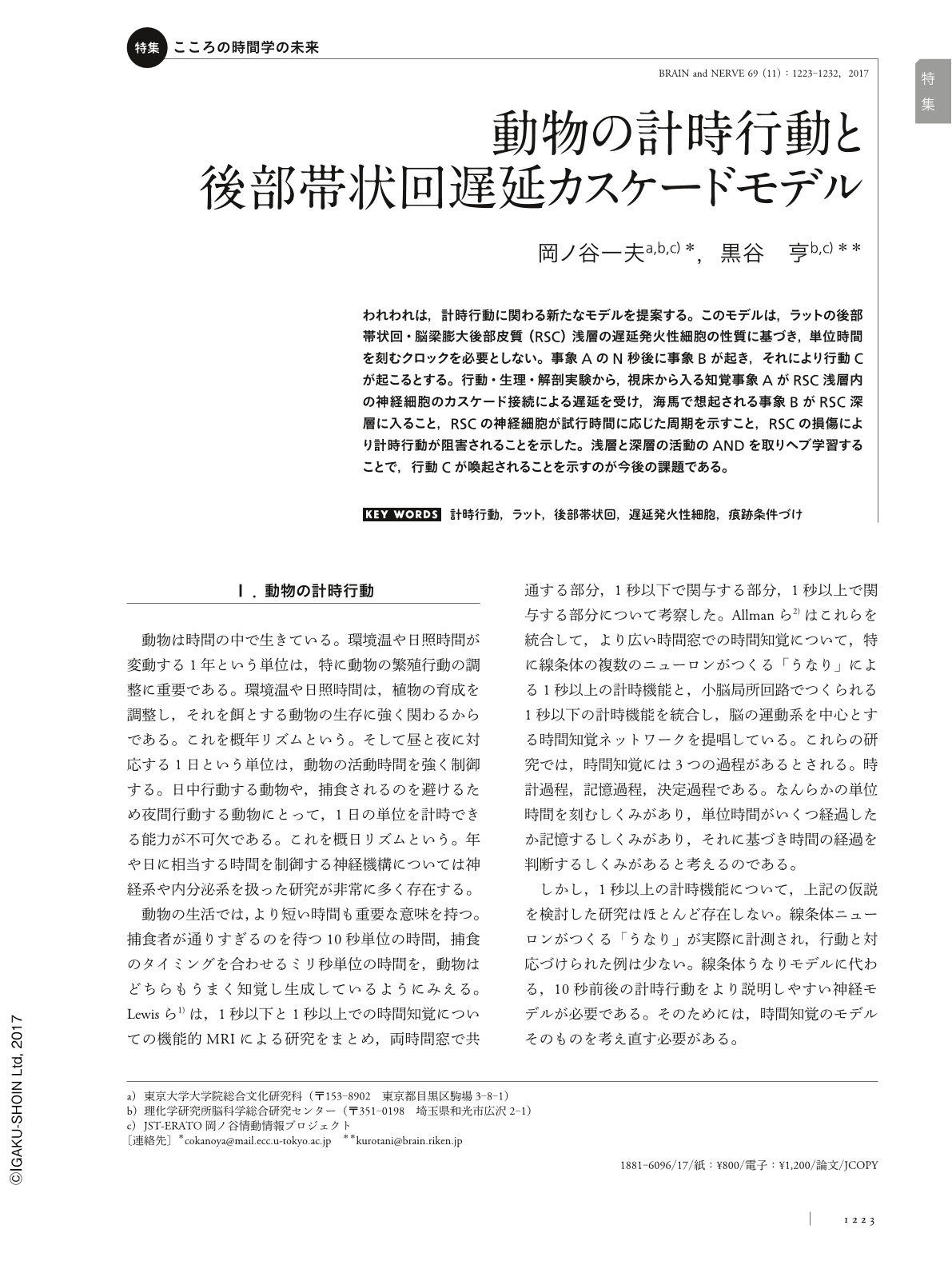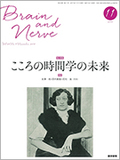Japanese
English
- 有料閲覧
- Abstract 文献概要
- 1ページ目 Look Inside
- 参考文献 Reference
われわれは,計時行動に関わる新たなモデルを提案する。このモデルは,ラットの後部帯状回・脳梁膨大後部皮質(RSC)浅層の遅延発火性細胞の性質に基づき,単位時間を刻むクロックを必要としない。事象AのN秒後に事象Bが起き,それにより行動Cが起こるとする。行動・生理・解剖実験から,視床から入る知覚事象AがRSC浅層内の神経細胞のカスケード接続による遅延を受け,海馬で想起される事象BがRSC深層に入ること,RSCの神経細胞が試行時間に応じた周期を示すこと,RSCの損傷により計時行動が阻害されることを示した。浅層と深層の活動のANDを取りヘブ学習することで,行動Cが喚起されることを示すのが今後の課題である。
Abstract
We present a novel model for timing behavior. This model is based on the firing property of neurons in the superficial layers of the posterior cingulate granular retrosplenial cortex (GRS) and does not require a unit-time clock. Suppose that event B occurs N seconds after event A and triggers behavior C. By our behavioral, physiological and anatomical experiments, we found the following facts. 1) Thalamic input carrying sensory information, A, is provided to the superficial layers of the GRS and delayed by the lateral cascading connection within the layers. 2) Hippocampal input (recall information, B) is provided to the deep layers of the GRS. 3) The GRS neurons show timing behavior that is dependent on the trial cycle. 4) Lesioning the GRS impaired the acquisition of trace fear memory and the production of fear-induced freezing behavior, C. Thus we would propose that neural circuits in the GRS play a crucial role in the animal behaviors requiring time discrimination. The question of whether Hebbian learning occurs at the convergent neurons that integrates thalamic and hippocampal information remains unanswered.

Copyright © 2017, Igaku-Shoin Ltd. All rights reserved.


